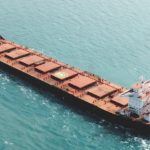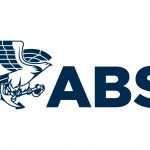End-to-end supply chains typically involve several modes of transport and a wide range of stakeholders. The original Seller, as well as the final Buyer of the product have little visibility of the location and condition of the product during transportation.
The original shipment from the Seller is represented as a consignment under contract with each transport operator and may be identified using different identification methods. The shipment also may be consolidated with other non-related Seller to Buyer shipments in different ways, depending on the mode of transportation.
Various standards organisations focused on individual modes of transportation have developed methodologies that have been adopted by their stakeholders in their supply chains. But in the larger picture, the ability to accommodate all modes of transportation with a single set of standards has been elusive.
Due to advances in technology and increased cost effectiveness, several international organisations are now developing key new standards for communication and interface technology implementation (see full referenced article linked below for further details).
Cooperation and adoption of international standards are the building blocks that will facilitate data visibility for intermodal transportation communications and interoperability between the stakeholder platforms.
We are now in a transition from older standards adopted by individual transport modes to the current effort conducted by multiple international standards organisations to identify a normalised method of identification of required data that will be applicable to any Seller to Buyer shipment, regardless of the transport mode. Any authorised stakeholder to the transaction should be able to access the same data in near-real time.
In order to enable end-to-end tracking and to enhance collaboration between all stakeholders involved, there is a need for standards for intermodal transport and interoperability in the exchange of data across varying modes of transport platforms.
Sector-focused standards groups are now addressing the need to cooperate and normalise their differences to close the gaps between transport modes. Such efforts have the power to facilitate more effective and transparent intermodal supply chains.
This article identifies some of the gaps and common requirements needed to enable effective end-to-end tracking across all modes of transport. The authors’ joint vision is to emphasise the need for international standards development, adoption and cooperation working toward more normalised processes that will readily provide shipment data to all authorised stakeholders for both transport and trade in a near-real time manner.
Alignment on cargo tracking
Due to the usage of different standards for identification and tracking between the various transportation modes, it is often difficult to transmit all the information regarded as pertinent to the varied stakeholders in an intermodal transaction. Visibility of the shipment may be lost to parties other than the current transport operator until arriving at the destination of that transportation mode.
Beneficial Cargo Owners (Seller and Buyer) would prefer to track their shipments, preferably using their own shipment identifiers end-to-end. Operators in different modes of transportation, however, when they are party to the same journey of a specific Seller to Buyer shipment, need to receive information about transport steps taken when changes in mode of transport are planned or occur due to unexpected events.
To keep track of the transport units, it is imperative to know by which equipment and/or by which transport means they are carried. Only then will stakeholders will be able use information related to the location of the transport means or transport equipment as reliable information about the location of the consignment, the shipment, the transport unit and ultimately the actual location of the goods.
For example, the position of a maritime vessel (using Automatic Identification Systems) or an airplane (using live plane tracker services) is known. Assuming a shipping line or airline accurately captured (and shared) the consignments that were loaded on board, the geoposition of the vessel is also the current location of the consignment.
In container shipping, the shipping line generally knows exactly which containers have been loaded and even where they are in the vessel. The same is true for an air carrier, which has control of where and when their containers are loaded on an aircraft. Therefore, it can be assumed with a great level of confidence where a specific container (and the cargo/shipments inside) is at any point in that transportation stage.
Identification of the goods may be limited to consolidated consignment IDs or shipment IDs. To know for sure what cargo/shipments are inside a container, it is necessary that the organisation that ‘stuffs’ or ‘loads’ the container accurately logs what is put into the container. The transport unit IDs may be recorded, if available, for the goods put into the container.
Other modes of transport may record which transport units (e.g. pallets/ULDs) that were loaded onto the transport equipment (e.g. trucks, trailers, rail wagons or aircraft). In all those cases, knowing where the transport equipment is provides reliable information on the location of the transport units carried therein.
Information captured during the transport movement may vary dependent on the transport operation or even by mode of transport. However, this information may be important to making critical and timely decisions by primary stakeholders during or after transport of the shipment.
Therefore, multi-modal supply chains currently require unique ID’s for:
• The shipment (Master transport ID assigned by Seller)
• The packages within a shipment (transport units)
• The transport contracts, consignment notes (like CMR)
• The transport means (like IMO vessel number)
• The transport equipment ID (like shipping container/ULD/rail car)
• The movement of the transport means (like flight for air-cargo)
• The movement of the goods by a transport means (i.e. manifest)
• All events and related data for each unique ID can be captured and cross-referenced for that particular operator and stakeholders of that mode of transport, but can also be related to the Master Transport ID assigned by the Seller
• Other IDs assigned by a stakeholder that relates to the shipment such as Trade Item ID (product code), Sales Order ID, etc.
Intermodal information sharing
The maritime industry currently uses the Bill of Lading (B/L) as its primary consignment identifier across a multitude of its operational processes and activities.
Once a maritime consignment arrives at port, the containers may be subsequently unloaded and re-loaded onto rail wagons or inland waterway barges to be transported further inland. There are even ship-to-air transfers currently in use for transporting goods in Australasia and the South Pacific.
Transfers to these alternative forms of transportation may require use of alternative consignment identifiers to be compatible with their current common practices.
During intermodal transport, some type of standard identification or cross-referenced key data elements must be used to capture and pass the information easily to other stakeholders in the transaction, uniquely identifying the specific shipment.
Perhaps a subset of information, normalised to accommodate each mode of transportation, might enable the sufficient pertinent details to describe the shipment as unique in the Seller to Buyer transaction, and thus be recognised and acceptable in the future by Regulatory officials.
In order to accommodate this development for intermodal transport, the information needs to be provided and accepted into an information-sharing network from which all authorised stakeholders can subscribe to the data for that shipment.
Commonly adopted standard international identification methods and their incorporation into operational processes need to be acceptable to all parties. Regulations recommending, endorsing, or even enforcing those methods will be introduced in the future so that shipments and goods may cross international borders more smoothly than is customary today, thus enhancing trade facilitation.
Various initiatives and projects involving many hundreds of organisations (both private and governmental) are already underway in pursuit of these goals, with organisations active in every area of the supply chain.
Clearly, there is a very high demand from supply chain stakeholders to improve the efficiency and effectiveness of the supply chain. All of those initiatives aim to improve tracking first so they have a reliable foundation of information available based on which they can make data-driven decisions with confidence.
Organisations adopting and using standards should remind the standardisation organisations of the paramount need for cooperation in developing these international standards, so they can be more universally accepted and implemented.
Summary
Supply chains today can no longer meet the heightened expectations of Sellers and Buyers when it comes to detailed tracking of the current location and condition of their goods. Even Logistics Service Providers involved in the transportation of the goods from Seller to Buyer are struggling with the lack of reliable tracking information for the cargo, the transport equipment and transport means, particularly when intermodal transfers are involved.
However, current initiatives are delivering the needed building blocks for future interoperability, both semantic (operational data) and technical (IT systems).
We are now in a transition from the standards adopted by individual transport modes to current efforts by multiple international standards organisations to identify a normalised method of identification of the required data that will be applicable to any Seller-to-Buyer shipment, regardless of the transport mode.
This shipment approach has been modelled in the past by the United Nations Centre for Trade Facilitation and e-Business (UN/CEFACT). However, overall adoption of Tracking and Tracing in a multi-modal approach has not yet been completed.
The current initiatives improving upon the standards already developed are delivering the needed building blocks for facilitating future intermodal supply chains. Normalised information using internationally agreed and recognised IT communications standards exchanged between the transport operators and their stakeholders will provide the building blocks toward efficient interoperability.
These building blocks, both old and new, should be based on common and open standards regardless of the mode of transport and regardless of any specific stakeholder group to ensure the most efficient end-to-end supply chains can be achieved.
The solution to normalised intermodal data communications between various modes of transport and the interoperability of their systems through the cooperation of the standards organisations and adoption of these new standards initiatives will help facilitate and enhance future international trade.
Source: Hellenic Shipping






